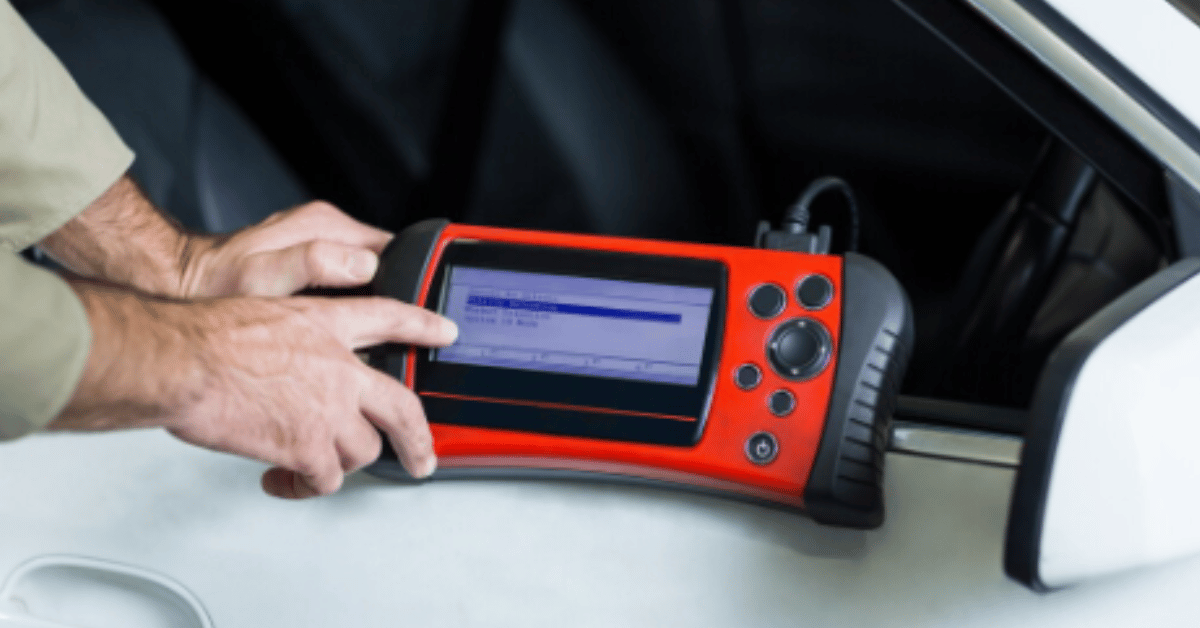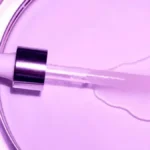A tint meter is an instrument designed to measure the transparency or light transmission of glass, most often applied to vehicle windows, building glass panels, and specialized industries like aviation and security. Searchers looking for clarity on the term want to know how tint meters work, why they are used, and what legal or practical roles they serve. At its core, a tint meter answers one critical question: how much visible light passes through a tinted surface? Within the first glance at the device, a user realizes it is less about aesthetics and more about precision. This measurement determines compliance with regulations, assures safety, and helps in maintaining standards across industries. Whether you are a vehicle owner wondering if your car meets state laws or an inspector verifying commercial glazing installations, a tint meter becomes a crucial tool. By grasping its mechanics, different types, and modern innovations, readers can understand why such a simple-looking device has become a significant factor in law enforcement, engineering, and consumer use.
The fascination with tint meters stems from their blend of science and everyday regulation. At one end, they embody optical principles of light transmission and absorption. At the other, they are legal instruments—often cited in police reports or architectural certifications. Like a ruler for transparency, they deliver results instantly, giving measurable data where human perception would falter. A driver might think their windows are light enough, but the tint meter provides an objective truth. As cities evolve and glass technologies diversify, the demand for more accurate and portable tint meters continues to grow. To understand the journey of this device, one must dive into its history, technological evolution, and the broader context of glass safety regulations. This article explores those dimensions with depth, clarity, and practical insight.
What is a Tint Meter and How Does it Work?
A tint meter is essentially a portable photometric device that measures visible light transmission (VLT) through glass. When light strikes a tinted surface, part of it is absorbed, part is reflected, and only a percentage passes through. The tint meter captures this transmission and expresses it as a percentage. For example, a reading of 70% VLT means that 70 percent of visible light is allowed to pass through, while 30 percent is blocked by the tint. This seemingly simple measurement has broad implications: it decides if a car window is too dark, if architectural glass meets environmental standards, or if specialized installations in laboratories allow adequate transparency for safety.
The basic working mechanism involves two units: a light source and a sensor. The light source emits a controlled beam, usually white LED, which passes through the glass. On the other side, the sensor detects the transmitted intensity. The meter then compares the output with the input to calculate transmission percentage. Modern tint meters are designed for quick clamp-on operation, often requiring no external calibration. As technology advances, they now include digital displays, Bluetooth connectivity, and even data logging capabilities for law enforcement agencies.
Evolution of Tint Meter Technology
Tint meters did not appear overnight. The earliest models were bulky and laboratory-bound, relying on stationary photometers. With the rise of automobile window tinting in the late 20th century, law enforcement agencies demanded portable solutions. This led to the creation of handheld tint meters, which could be used roadside within seconds. Over time, their designs evolved into pocket-sized units, offering higher accuracy and better user interfaces.
Today’s tint meters often employ dual-beam technology to compensate for ambient light interference. They also utilize rechargeable batteries, digital calibration, and automated self-tests. Some even connect to mobile apps, enabling inspectors to record results directly into compliance databases. The miniaturization of components and the integration of software analytics demonstrate how a once niche instrument has entered the digital age.
Applications of Tint Meters in Different Fields
Tint meters serve a variety of roles beyond vehicle inspections. In architecture, they ensure that building glass complies with both safety and energy efficiency codes. Too much tint could reduce natural lighting, increasing energy demands for artificial illumination. Too little tint may fail to reduce glare or heat, affecting occupant comfort. In aviation, tint meters help test cockpit canopies, ensuring pilots maintain clear visibility while still protecting against sun glare. Laboratories use them for glassware and safety shields, confirming light transparency for chemical reactions and operator safety. Even in consumer markets, tint meters are purchased by car enthusiasts and workshop owners to verify legal compliance before applying aftermarket films.
Legal Importance of Tint Meters
The regulatory significance of tint meters is immense. Different regions enforce varying standards for window tinting, often specifying minimum VLT levels for front, side, and rear windows. For example, one jurisdiction may require at least 70% VLT on front side windows, while another allows as low as 50%. Police officers frequently rely on tint meters during roadside checks, as visual estimation alone cannot determine legality. Courts also accept tint meter readings as evidence in traffic violation cases. Because of this, accuracy, calibration, and certification of these devices are paramount. A miscalibrated tint meter could wrongly penalize a driver, making the legal system dependent on precision technology.
Table 1: Types of Tint Meters and Their Features
| Type of Tint Meter | Features and Use Case | Portability | Accuracy Level | Common Users |
|---|---|---|---|---|
| Single-Beam Meter | Measures light once; simple design | High | Moderate | Car workshops |
| Dual-Beam Meter | Compensates for ambient light | High | High | Law enforcement |
| Clamp-Style Digital Meter | Easy roadside application | Very High | High | Police, inspectors |
| Lab-Grade Photometric Meter | Used in controlled environments | Low | Very High | Research labs |
| App-Integrated Meter | Syncs results to digital devices | Very High | Moderate-High | Agencies, advanced users |
Precision and Calibration Standards
A tint meter’s reliability depends on strict calibration. International standards recommend that these devices be tested against known optical filters, ensuring accuracy across different light conditions. Some manufacturers provide self-calibrating meters, while others require periodic lab testing. Professional users, especially government agencies, maintain calibration logs similar to radar guns. This ensures that every reading taken during inspections holds legal weight. For consumers, understanding calibration helps them trust results and avoid disputes when verifying tint levels on their vehicles or buildings.
Innovations Shaping the Future of Tint Meters
As industries evolve, so do the demands placed on tint meters. Next-generation devices are incorporating artificial intelligence for error detection, automatically flagging inconsistent readings caused by dirty glass or curved surfaces. Wireless connectivity allows instant transmission of results to cloud databases, streamlining enforcement and reporting. There are even concepts of integrating tint meters into smartphones, using camera sensors and calibration add-ons. While not yet as precise as standalone devices, these innovations indicate a shift toward accessibility and affordability. The future may see tint meters becoming household gadgets, much like thermometers or laser distance meters, expanding their reach beyond professionals.
Table 2: Benefits of Using Tint Meters Across Industries
| Industry | Benefits | Example Use Case |
|---|---|---|
| Automotive | Ensures legal compliance, improves safety | Police verifying tinted car windows |
| Architecture | Maintains building codes, optimizes energy use | Checking glass panels in skyscrapers |
| Aviation | Balances visibility with glare protection | Testing pilot cockpit canopies |
| Law Enforcement | Provides objective evidence | Roadside inspections and court cases |
| Laboratories | Assures transparency for experiments | Safety glass in chemical labs |
Challenges and Limitations of Tint Meters
Despite their utility, tint meters are not without limitations. Curved glass surfaces, for instance, can distort readings, making it harder for inspectors to get accurate results. Ambient lighting and reflections may interfere with low-quality models. Users must also handle devices carefully, as scratches on sensors or dirt on the glass can affect performance. Moreover, affordability remains an issue; while basic models are accessible, high-precision dual-beam meters remain costly for smaller workshops. Another challenge lies in standardization. Different states or countries may recognize only certain types of tint meters, complicating enforcement consistency. Manufacturers are working toward universal compliance certifications, but this remains an ongoing hurdle.
Consumer Guide: Choosing the Right Tint Meter
For individuals and businesses considering purchasing a tint meter, several factors must be weighed. Portability is crucial if the device will be used frequently outdoors. Accuracy becomes vital if results will be referenced for legal compliance. Durability, ease of calibration, and data storage features also matter. Car workshops may benefit from mid-range clamp-style meters, while research facilities would lean toward high-precision lab-grade instruments. It is also advisable to verify that the chosen tint meter is certified under relevant regional standards to avoid legal disputes.
Expert Perspectives on Tint Meters
Industry experts often highlight the dual role of tint meters in both safety and enforcement. A veteran traffic officer once remarked, “Without tint meters, we’d be relying on guesswork, and guesswork doesn’t hold up in court.” Similarly, an architectural engineer explained, “Glass design is about balancing light, heat, and safety. Tint meters ensure we hit the right numbers, not just assumptions.” Such perspectives underline how this device transcends its physical simplicity, serving as a bridge between science and regulation.
Future Outlook
The next decade is expected to bring even more advanced tint meters into mainstream use. As vehicles integrate smart glass capable of changing transparency electronically, tint meters may need to adapt to dynamic tinting systems. Likewise, in sustainable architecture, as glass becomes central to green building certifications, inspectors will require more sophisticated tools to measure multi-layer coatings and adaptive glazing. The trend points toward automation, integration, and smarter compliance systems where tint meters will play an increasingly essential role.
Conclusion
A tint meter may appear as a small, handheld gadget, but its role in modern life is disproportionately large. From roadside checks that ensure public safety to laboratory environments where transparency is critical, this instrument brings measurable accuracy to areas where human judgment alone would falter. Its importance lies not just in numbers, but in trust—trust that laws are enforced fairly, that safety is not compromised, and that industries meet standards consistently. As technology advances, tint meters will continue to evolve, becoming smarter, more connected, and more accessible. Their presence ensures that clarity—both literal and figurative—remains a central value in how societies manage transparency, regulation, and innovation.
“Every measurement tells a story,” one manufacturer said, “and with tint meters, that story is about safety and compliance.” Another industry voice summarized it best: “When light passes through glass, we see more than transparency; we see responsibility. The tint meter simply makes it measurable.” These reflections capture the essence of why tint meters, though modest in appearance, are indispensable in shaping safer, regulated, and technologically aligned futures.
FAQs
1. What does a tint meter measure?
A tint meter measures visible light transmission percentage through glass or tinted surfaces.
2. Why are tint meters important in law enforcement?
They provide objective, legally recognized evidence of window tint compliance during roadside checks.
3. Can consumers use tint meters at home?
Yes, portable versions allow individuals to test vehicle or home glass tint levels before inspections.
4. Do tint meters require calibration?
Yes, professional-grade tint meters must be calibrated regularly to maintain accuracy and legal reliability.
5. What industries use tint meters beyond automobiles?
They are widely used in architecture, aviation, laboratories, and energy-efficient construction projects.











